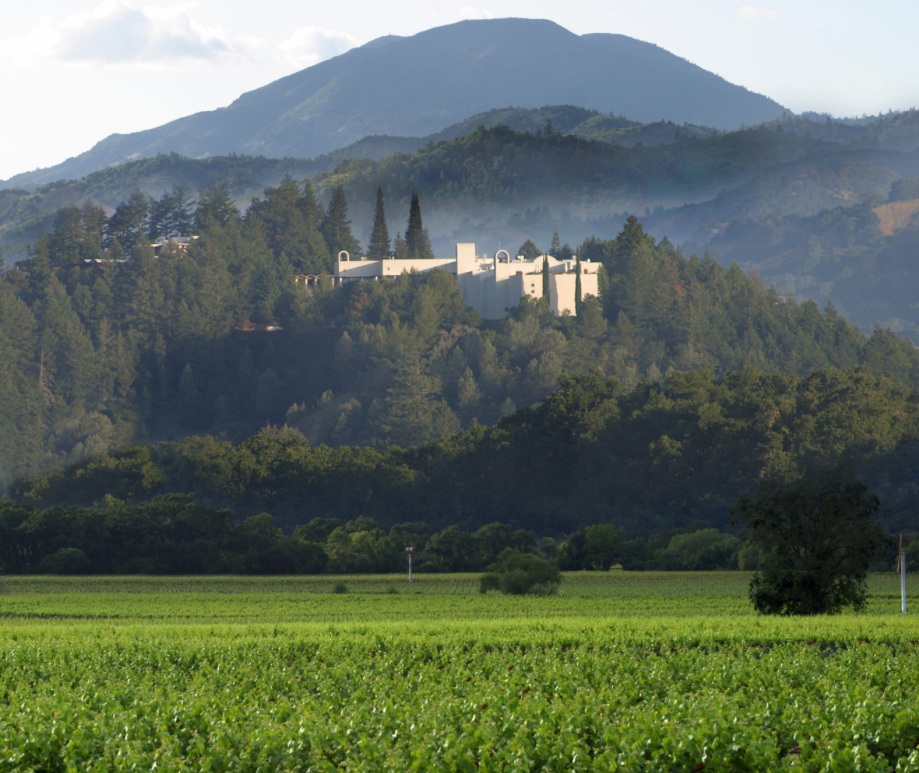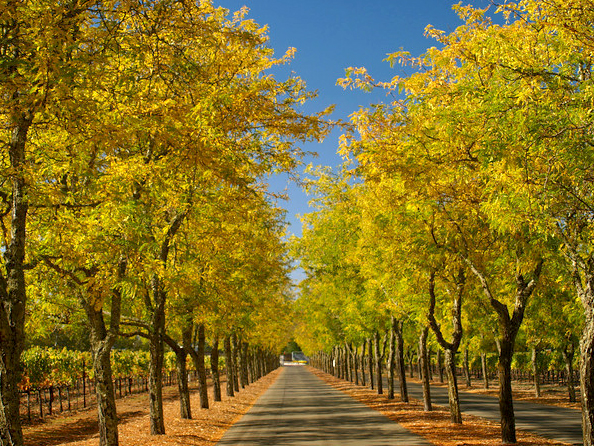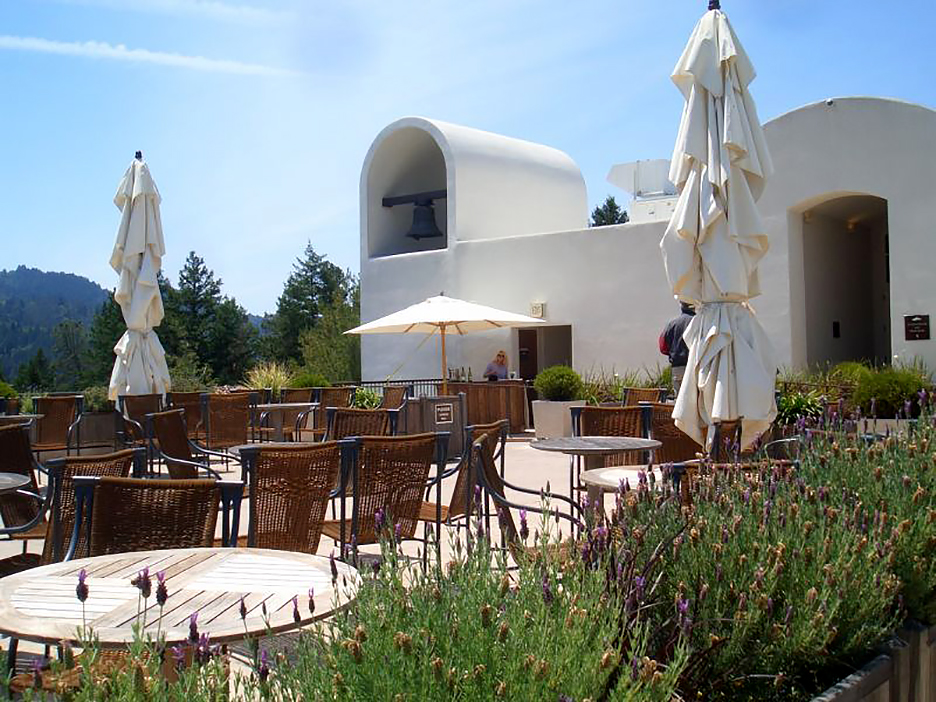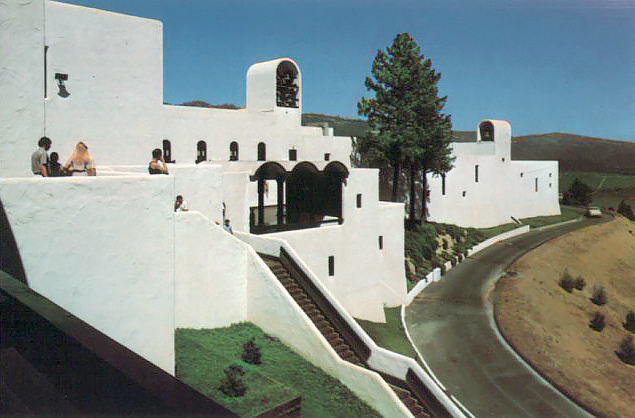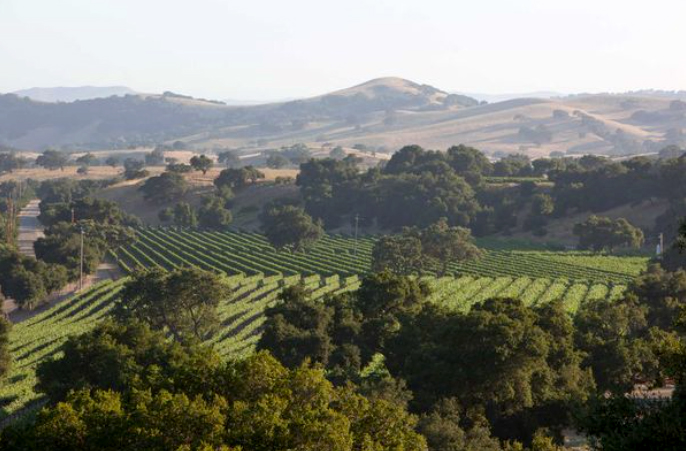Pale straw color; bread, green apple, citrus, lemon on the nose; yellow apple, honeydew melon, white peach, lemon on the palate.
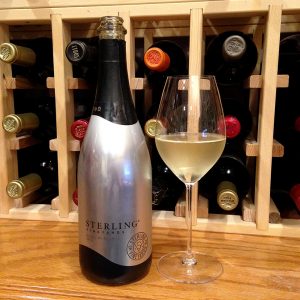
Brut, although label and website does not explicitly claim that, and the rich fruit certainly gives suggestion of sweetness. So maybe, extra dry—taste and you make the call. Rich and creamy in the mouth; elegant with balanced fruit and acidity. Fun, soft, easy drinker that should please variety of palates. All fermentation in stainless steel to preserve freshness and the pure, assertive chardonnay fruit flavor. Nicely vigorous bubbles; made using the Charmat Method—not the traditional Champagne method, but the one used in Prosecco. This further demonstrates that high quality wines can be made with secondary fermentation in a tank rather than individual bottles.
As blanc de blanc name implies, this is 100% chardonnay, no pinot noir or pinot meunieur need apply. The bottle really delivers on chard typicity (demonstrates the signature characteristics of the grape). The grapes come from a single vineyard in Napa. Taste terroir in a sparkling. No small thing.
Sterling Vineyards began when British international newspaper owner Peter Newton purchased land near Calistoga in Napa Valley in 1964 and established the vineyards. In quick succession, he purchased more land and, in addition to cabernet sauvignon, planted merlot (then virtually unknown in Napa), chardonnay, and sauvignon blanc.

Bottling began in 1969, including California’s first vintage-dated merlot. In 1971, Martin Waterfield—an officer in Newton’s company—designed a Mediterranean-style white stucco winery complex inspired by structures on the Greek island of Mykonos, where Newton once lived. Today, the complex is one of the most-visited in Napa.
The Newton family sold the winery and vineyards to Coca Cola in 1977. In 1982, Coke sold the operation to Joseph E. Seagram and Sons, and Sterling quickly became the crown jewel of Seagram’s wine efforts. Between 1982 and 2000, Sterling’s yearly sales jumped from less than 60,000 cases to 400,000. Even better, quality improved.
In 2001, Diageo—a United Kingdom drinks conglomerate—purchased Seagram and mixed Sterling into its existing wine business. In 2015, Diageo sold most of its wine business to Treasury Wine Estates, an Australian-based global winemaking and distribution operation that traces its roots to Penfolds Wine and Foster’s Group beer brewers.
Treasury is a major international player in the wine world, making wine in 12 countries, selling more than 35 million cases of wine a year, and generating sales of more than $2 billion in sales. Labels you may recognize beyond Sterling include Stag’s Leap, Beaulieu Vineyard, Beringer, Chateau St. Jean, Greg Norman Estates, Lindeman’s, Wolf Blass, and their flagship—Penfolds. That represents lots of changes and marketing directions for Sterling. Treasury tends to focus on commodity wines sold in supermarkets and mass-market liquor-beer-wine stores, which is where Sterling largely resides today. This effort is example, also an example that Sterling can deliver solid wine at its price point.
Sterling Vineyards Blanc de Blancs 2016 is wonderful expression of chardonnay at a pocket-pleasing price point. Vivid and precise fruit, vigorous bubbles, clean and crisp in the mouth. Definitely something you should try if you are into sparkling, and if you are not into sparkling, you should be. Pair with chicken and cheese empanadas, fried chicken and fried food in general, oysters, sushi, corn and dried tomato soufflé with shrimp-onion relish, twice-baked goat cheese soufllé; endive, stilton, and walnut salad; asparagus and avocado salad. Bottom line: this will go with almost anything. $24-35
